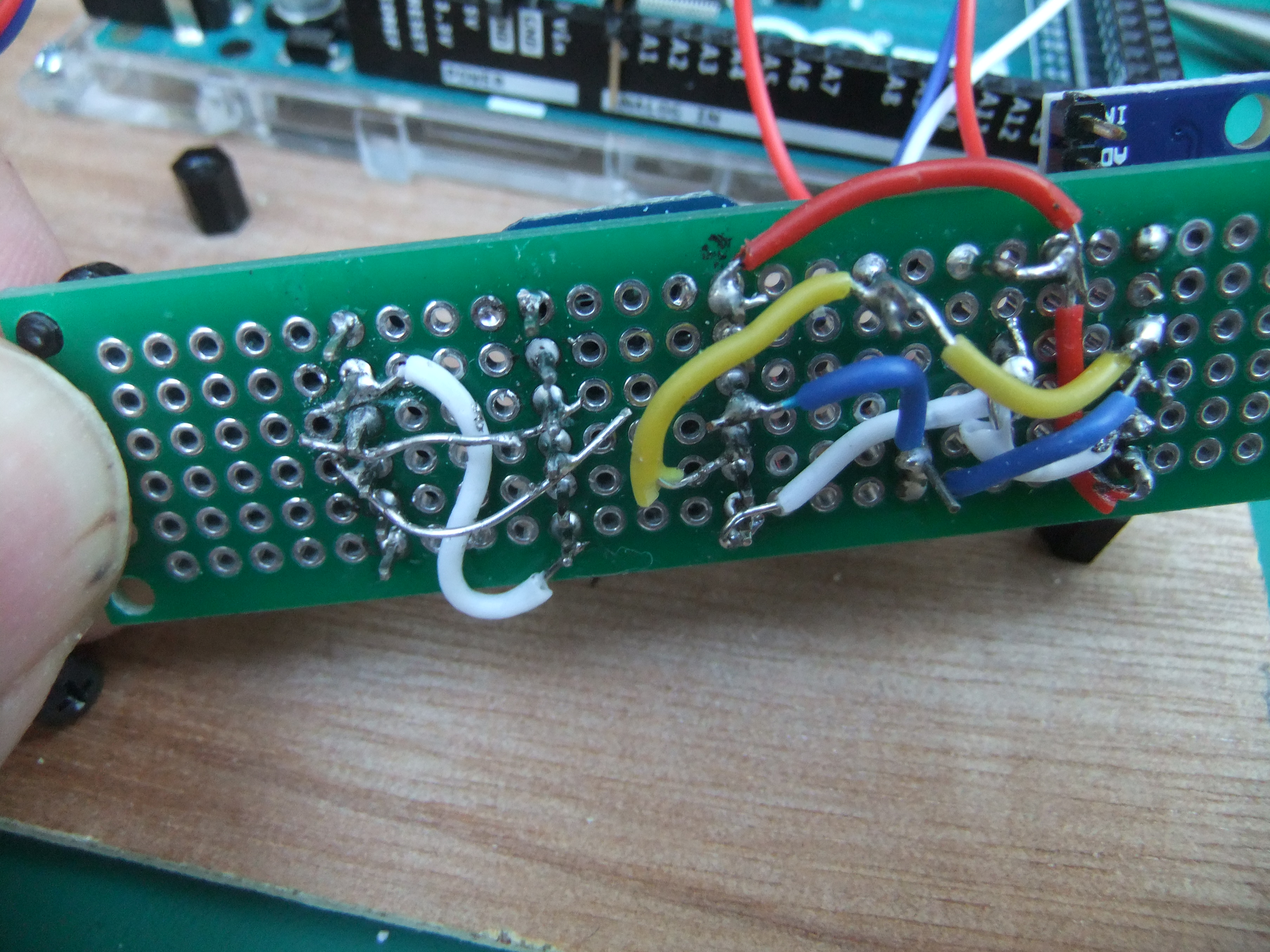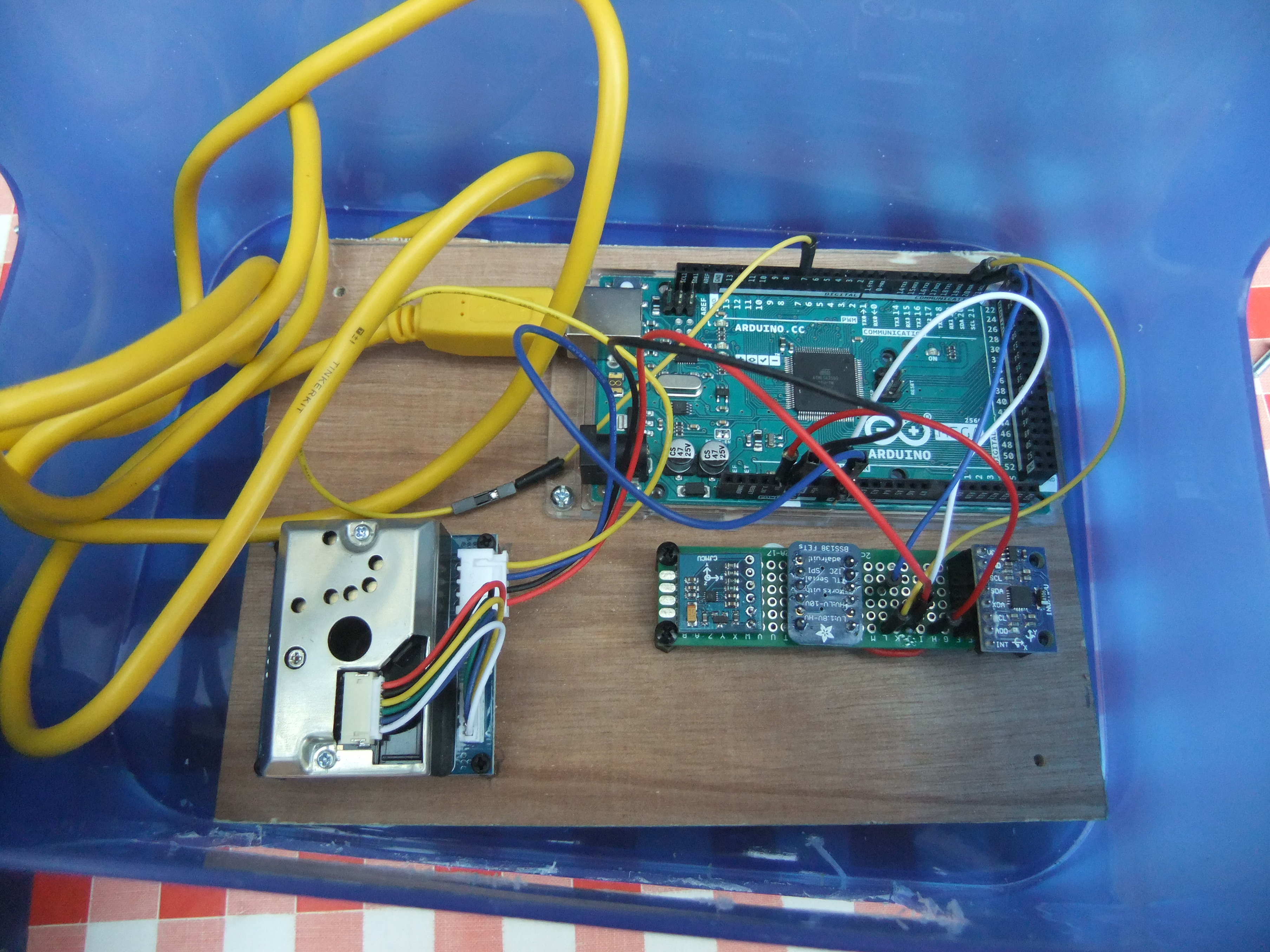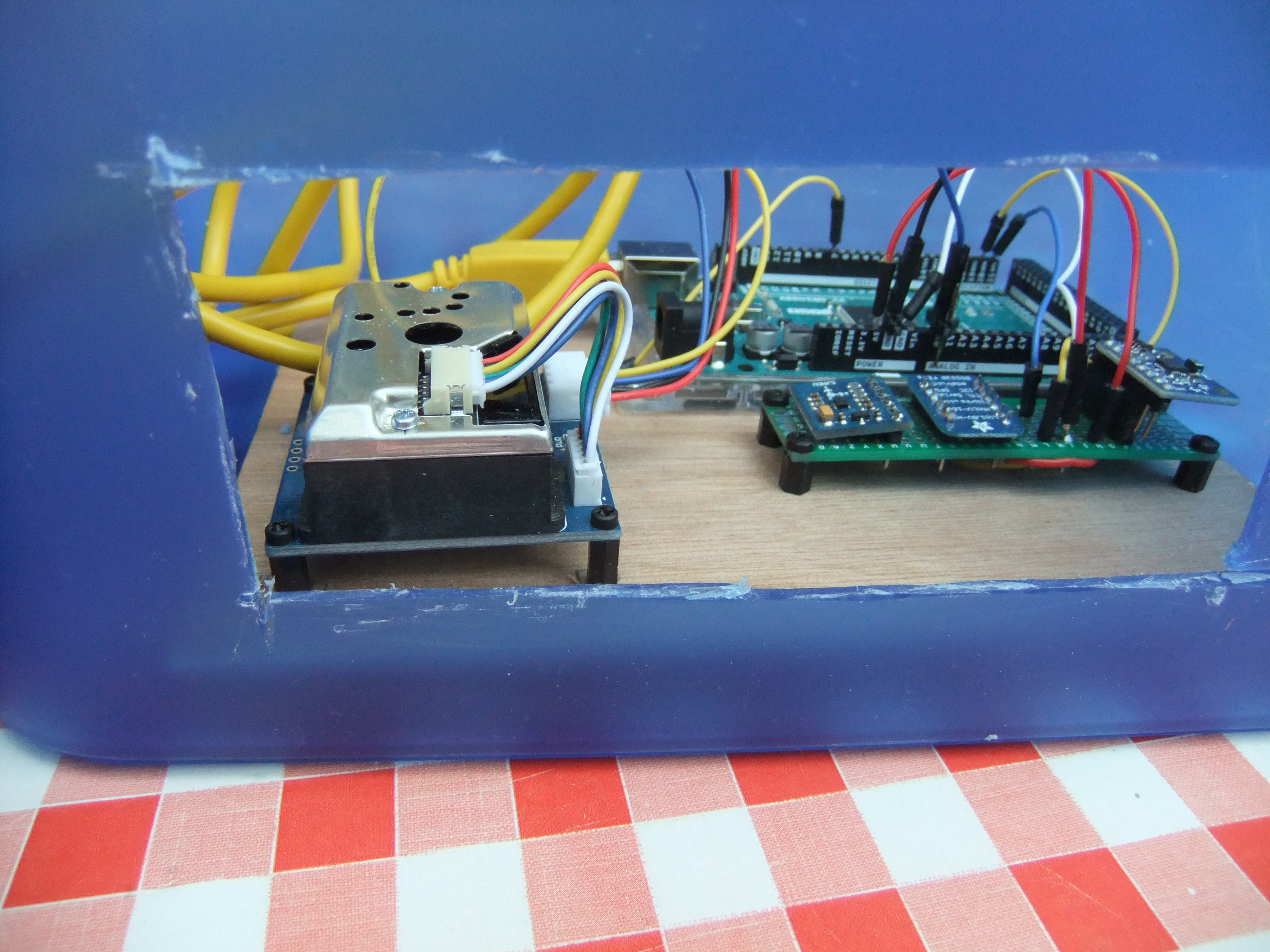A machine to expand awareness
As you read this, several GPS satellites in earth orbit ar tansmitting tiny signals which you, as a human, cannot hope to perceive. But your smartphone can, and what a difference GPS makes to our lives! My project is a kit to find, identify and measure other subtle signals and energies, and help us to assess their impact on our lives.
produced by: David Upton
I wanted to build a kit of sensors which are robust enough be taken on a walk, in order to extend the walkers' sensory perceptions: to look at real phenomena that may have subtle influences over the way we perceive a space. For example, radio waves, magnetic fields and pressure variations. In otehr words, to leverage physical computing, and in particular sensor development, to help us as humans better to understand our relationship with our environment, and to give us a means of breaking through boundaries such as the 'envelope of skin' that contains us.
Data would be gathered from as many sensors as possible at regular intervals (say every 10 seconds, though I need to test this empirically) and stored in a .csv file, each line tagged with the time and location from a GPS module. This would not give a large amount of data in machine terms. (Say thirty types of data streams, including GPS coordinates and time, recorded every 10 seconds, gives just under 11,000 chunks of data per hour, many of these chunks being a simple floating point number.)
However this is far too much data to be meaningful to a human, and the project will therefore aim at three stages of automatic analysis:
1. take each data stream and look for significant variations (variance) during the period of the walk. 'Significant' would typically mean large variations, often those that humans did not notice, for example variations in magnetic strength or radio waves, whilst ignoring ones that most humans would be aware of, such as temperature changes. Tease out the variations to identify the two or three most varying streams.
2. Look for clusters of variation in specific places at specific times, and in particular how any 'human' data (heart rate, EEG, for example) correlated to external data.
3. Over time, build a database of actual data during different walks, and compare each new walk with those.
I originally planned this project in a psychogeographic context, but it is of wider use. I have been very influenced by Gregory Bateson's views that life is a network of intersecting cybernetic loops, mostly unaware of each other: “A 'mind' can include non-living elements as well as multiple organisms, may function for brief as well as extended periods, is not necessarily defined by a boundary such as an envelope of skin, and consciousness, if present at all, is always only partial.”
I have also been influenced by sound artists such as Christina Kubisch, who uses adapted microphones to 'hear' magnetic signals given off by electrical devices, and turns these into musical compositions, such as Tesla's Dream.
References:
Bateson, G: "Steps to an ecology of mind", Univ of Chicago Press, 2000. My quote is from the introduction, by M C Bateson, page xi



































































